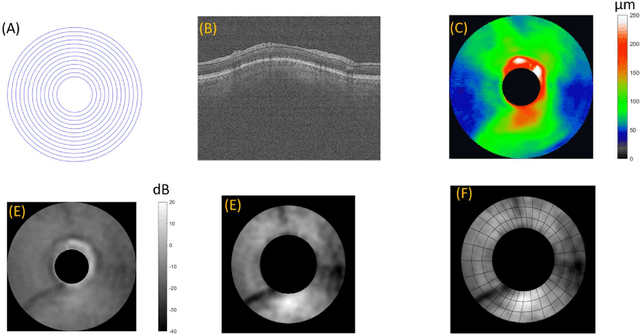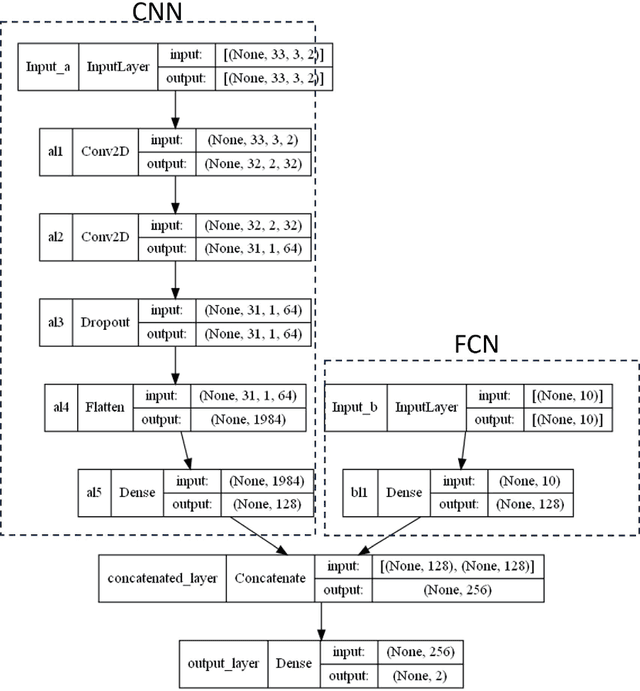Rohit Varma
A Hybrid Deep Learning Classification of Perimetric Glaucoma Using Peripapillary Nerve Fiber Layer Reflectance and Other OCT Parameters from Three Anatomy Regions
Jun 06, 2024

Abstract:Precis: A hybrid deep-learning model combines NFL reflectance and other OCT parameters to improve glaucoma diagnosis. Objective: To investigate if a deep learning model could be used to combine nerve fiber layer (NFL) reflectance and other OCT parameters for glaucoma diagnosis. Patients and Methods: This is a prospective observational study where of 106 normal subjects and 164 perimetric glaucoma (PG) patients. Peripapillary NFL reflectance map, NFL thickness map, optic head analysis of disc, and macular ganglion cell complex thickness were obtained using spectral domain OCT. A hybrid deep learning model combined a fully connected network (FCN) and a convolution neural network (CNN) to develop and combine those OCT maps and parameters to distinguish normal and PG eyes. Two deep learning models were compared based on whether the NFL reflectance map was used as part of the input or not. Results: The hybrid deep learning model with reflectance achieved 0.909 sensitivity at 99% specificity and 0.926 at 95%. The overall accuracy was 0.948 with 0.893 sensitivity and 1.000 specificity, and the AROC was 0.979, which is significantly better than the logistic regression models (p < 0.001). The second best model is the hybrid deep learning model w/o reflectance, which also had significantly higher AROC than logistic regression models (p < 0.001). Logistic regression with reflectance model had slightly higher AROC or sensitivity than the other logistic regression model without reflectance (p = 0.024). Conclusions: Hybrid deep learning model significantly improved the diagnostic accuracy, without or without NFL reflectance. Hybrid deep learning model, combining reflectance/NFL thickness/GCC thickness/ONH parameter, may be a practical model for glaucoma screen purposes.
Automatic Assessment of Artistic Quality of Photos
Apr 17, 2018



Abstract:This paper proposes a technique to assess the aesthetic quality of photographs. The goal of the study is to predict whether a given photograph is captured by professional photographers, or by common people, based on a measurement of artistic quality of the photograph. We propose a Multi-Layer-Perceptron based system to analyze some low, mid and high level image features and find their effectiveness to measure artistic quality of the image and produce a measurement of the artistic quality of the image on a scale of 10. We validate the proposed system on a large dataset, containing images downloaded from the internet. The dataset contains some images captured by professional photographers and the rest of the images captured by common people. The proposed measurement of artistic quality of images provides higher value of photo quality for the images captured by professional photographers, compared to the values provided for the other images.
 Add to Chrome
Add to Chrome Add to Firefox
Add to Firefox Add to Edge
Add to Edge